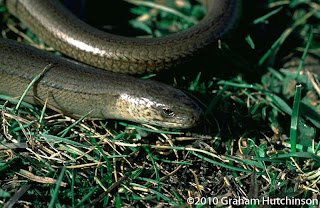It's Black and White ( No Really )
Image Title - In The Beginning
I have spent most of my photographic life using Film. To be more specific, slide film. When I returned from a photo shoot with two or more rolls of exposed film, I would pack them into the pre-paid envelopes and send them off to Kodak or Fuji to be developed. I would then have to wait about two weeks to get them back from the lab. With great excitement and expectation, I would place them on the light table to sort out the "keepers" good ones.
A roll of film was 36 exposures. To get one, yes ONE, keeper was good. That is a low number by today's standards, but with film you didn't have the luxury of checking your exposure or even the composition on the LCD screen on the back of your camera.
I had a lot of disappointments. I remember oh-so-well the excitement of viewing the slides. I also remember the oh-my-gosh and horror of a blown out image or a terrible composition - shots I thought were going to be big money earners. Of course, then I had to explain to my wife that once again it would be beans on toast for supper.
Over the years, I have really tried to get out of the habit of having to have at least one keeper from each shoot. But even now, I regard every photo shoot as a failure if I do not get that "keeper."
Which brings me to the point of this blog !!
When I get home from a shoot, I nearly always follow the same routine. After I download the images, I do a very quick run through and get rid of the really crappy bad ones (even now there are a lot of those). Then, I rate them based on quality and likeability (is that a word here). Five being the best, down to one, which is very nearly a delete.
After looking through the images a few times, I usually find one or two that are moderately acceptable or I think have some potential. Then I go through the mediocre ones and look for any images with a lot of contrast and with those images, I do a quick and dirty black and white conversion.
You will be surprised how a very mediocre image can really pop as a black and white.
This is just another case of a black and white saving the day.
Meaning, that we could have some meat with our beans for supper!
Image Title - A Fishermans World
In the images above, I used Photoshop for my Black and White Conversion. Recently, I have been using Adobe Lightroom, which like Photoshop, has a quick and dirty conversion you can use to quickly view the image as a black and white. Lightroom has another awesome tool, which gives you alot of control when converting the final image.
Below is a great example. In 2010, I went with my wife and son to Bonavista. I found myself at one of the most photographed lighthouses in Newfoundland. I had my camera, but it was around midday and the light was horrible. I took a couple of shots, but everything was wrong. The shots were over polarized (too blue) and had a little vignetting, which is normal with a wide angle lens. To top it off, the camera couldn't have been on the same plane as the scene. In other words, I was shooting slightly up or down a little, which makes the outside lines converge (the pole). Take a look.
Now see the same image with a Lightroom Black and White conversion.
If you want to get really Cocky creative, try adding a vignette. Not only are they FREE, a vignette could be the difference between beans on toast and steak dinner on the table for supper.
You may think that this technique is only for landscape photography but I can assure you it has saved the day for many portrait and wedding photographers also. Next time you are viewing someones web site and you see a few Black and White images have a real close look at the exposure of the shot.
As always, I'd love to hear from you. If you have any questions or just want a chat, feel free to get in touch with me.
As always, I'd love to hear from you. If you have any questions or just want a chat, feel free to get in touch with me.
Until next time - Have fun.























 Well here I go, head first again. “Flying by the seat of my pants”, as my wife would say. I have been thinking of writing a blog for a while now, but I really did not know if I had anything relevant to say. As a result, it always stayed on the back burner and never got started.
Well here I go, head first again. “Flying by the seat of my pants”, as my wife would say. I have been thinking of writing a blog for a while now, but I really did not know if I had anything relevant to say. As a result, it always stayed on the back burner and never got started. 



